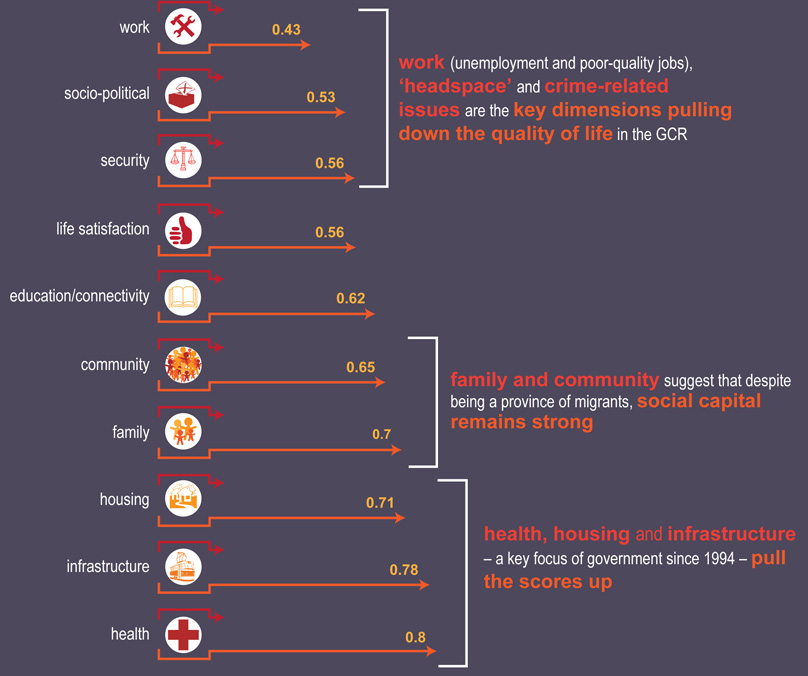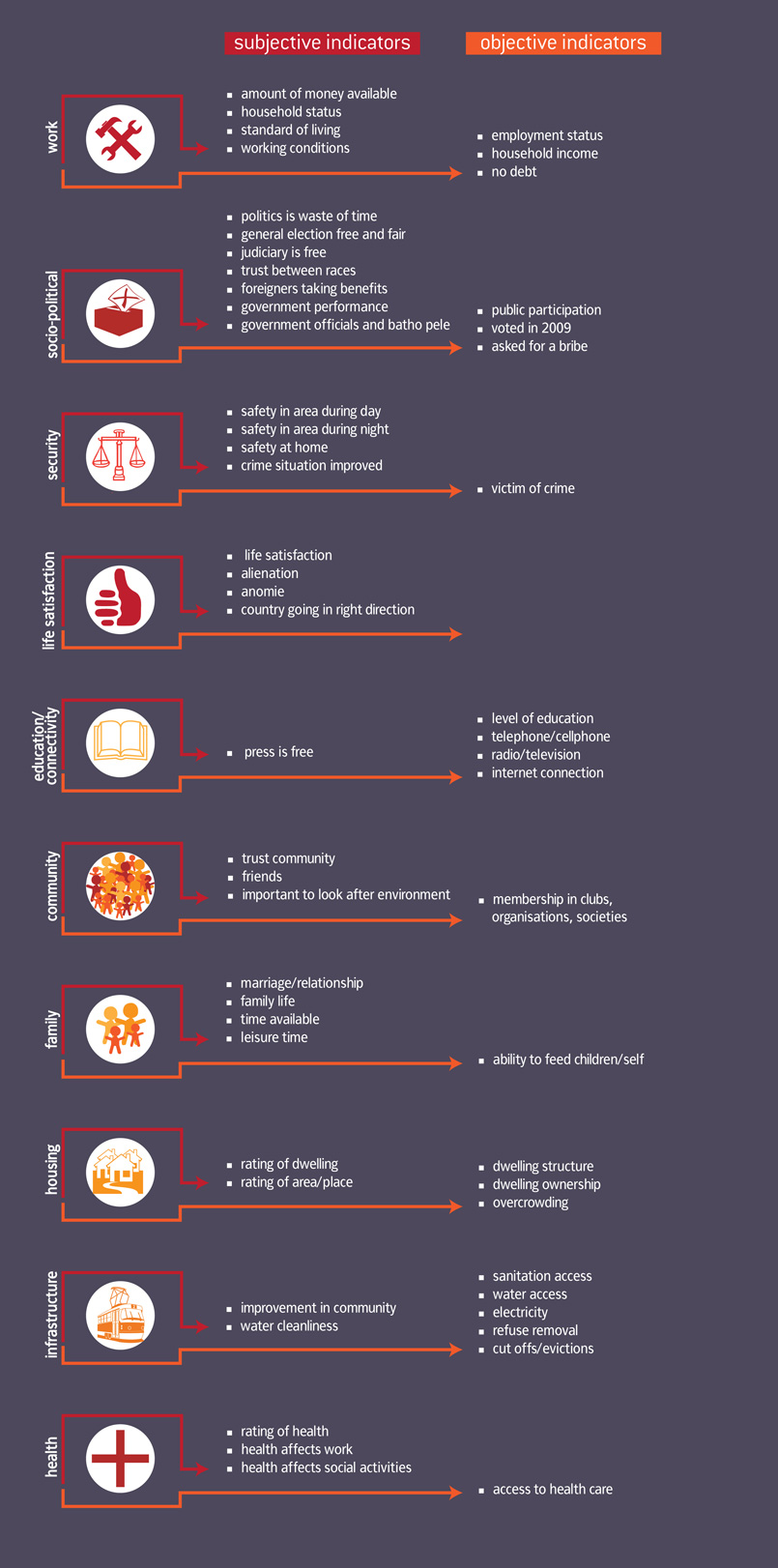
| introduction |
| the laws of attraction |
| measuring results |
|
Quality of life studies abound, locally and internationally, but few use rigorous multivariate statistical analysis to reach defensible conclusions. We used the 2009 ‘Quality of Life' survey to fill this gap. The survey allowed us to commingle analysis of objective and subjective indicators – some 56 variables in all – to provide a rigorous definition and analysis of quality of life. The dimensions and indicators (with their variables) appear below.
|
| survey of perceptions of quality of life in the GCR: subjective and objective indicators |
|
The logic is clear from a scan of the variables. Quality of life includes both objective factors – access to services, connectivity, food security, jobs, services and so on – as well as deeply subjective matters, ranging from alienation and anomie to racial and communal trust and faith in the institutional machinery of South Africa. Many people may hold extreme views on one or two issues close to their hearts, but measured across multiple variables, their extremes are placed and understood in the context of views on multiple issues and areas of life. |
| quality of life dimensions: means |
 |
The chart makes clear that 'work' (both unemployment and poor quality jobs), ‘pscho-social’ issues and 'crime-related' issues are the key dimensions pulling down the quality of life in the GCR. On the positive end of the scale, 'health', 'housing' and 'infrastructure' – a key focus of government since 1994 – pull the scores up, followed by ‘family’ and ‘community’, suggesting that despite being a province of migrants, social capital remains strong. |

